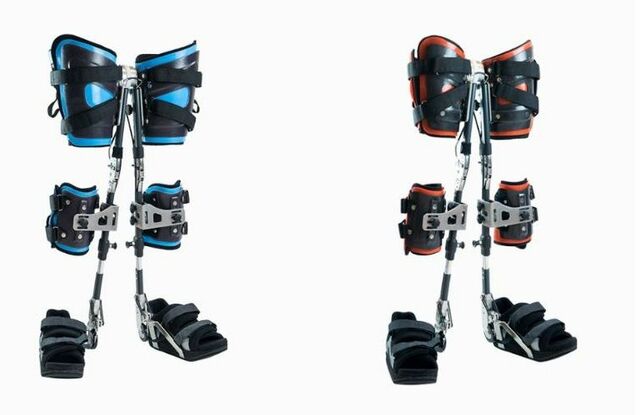Partner: MEBSTER
field: HEALTHCARE
MEBSTER is a research and development company that, through its cost-effective assistive devices, supports medical care providers to improve and streamline their services for clients with mobility disorders, literally aiding individual clients to get back on their feet. With its international team of engineers, doctors, and physiotherapists based in the Czech Republic, MEBSTER are committed to intensively developing innovative assistive technologies and medical devices for rehabilitation for the next six years. Their research is solely patient-centred, and they design their devices directly with users, rigorously testing all their products to ensure they are as simple and as comfortable as possible.
The objective of the cooperation between MEBSTER and IT4Innovations was to demonstrate the use of numerical modelling and simulation in the design process of an innovative UNILEXA exoskeleton for gait assistance, designed for people with partial or complete loss of lower limb function. The computational model is based on the finite element method (FEM). The exoskeleton assembly is simulated with the inclusion of effects, resulting in the strength/stiffness of the system. Since the exoskeleton assembly is a mathematically complex nonlinear problem with a wide variation of boundary conditions, the use of high-performance computing (HPC) is necessary to solve such a complex numerical model.
The ANSYS software was used for the creation of the computational model and numerical simulation. A simplified model of part of the UNILEXA exoskeleton assembly was created to estimate the required HPC resources. The Barbora supercomputer was used to solve a complex numerical model, including nonlinearities such as contact interfaces with friction, large displacements, etc. The main benefit of the simulation was the possibility of verifying the safety and effectiveness of the product, an increase of users' comfort, and the subsequent increase in the competitiveness of the product on the market.

The UNILEXA exoskeleton is a medical device and is therefore subject to strict regulation; to guarantee its safety and usability for patients it must be repeatedly validated through simulations and tests, which is very costly and time-consuming. The simulations run by IT4Innovations have verified the safety and effectiveness of the existing product and its other versions and variants. The simulations also helped to reveal optimisation opportunities for the UNILEXA exoskeleton, which will lead to an increase in the quality of care provided to the end user with an emphasis on user comfort not only for the patients but also for the medical staff using the technology.

This success story was supported by the EuroCC project. This project has received funding from the European High-Performance Computing Joint Undertaking (JU) under grant agreement No 951732. The JU receives support from the European Union’s Horizon 2020 research and innovation programme and Germany, Bulgaria, Austria, Croatia, Cyprus, the Czech Republic, Denmark, Estonia, Finland, Greece, Hungary, Ireland, Italy, Lithuania, Latvia, Poland, Portugal, Romania, Slovenia, Spain, Sweden, the United Kingdom, France, the Netherlands, Belgium, Luxembourg, Slovakia, Norway, Switzerland, Turkey, Republic of North Macedonia, Iceland, Montenegro. This project has received funding from the Ministry of Education, Youth and Sports of the Czech Republic (ID:MC2101).
